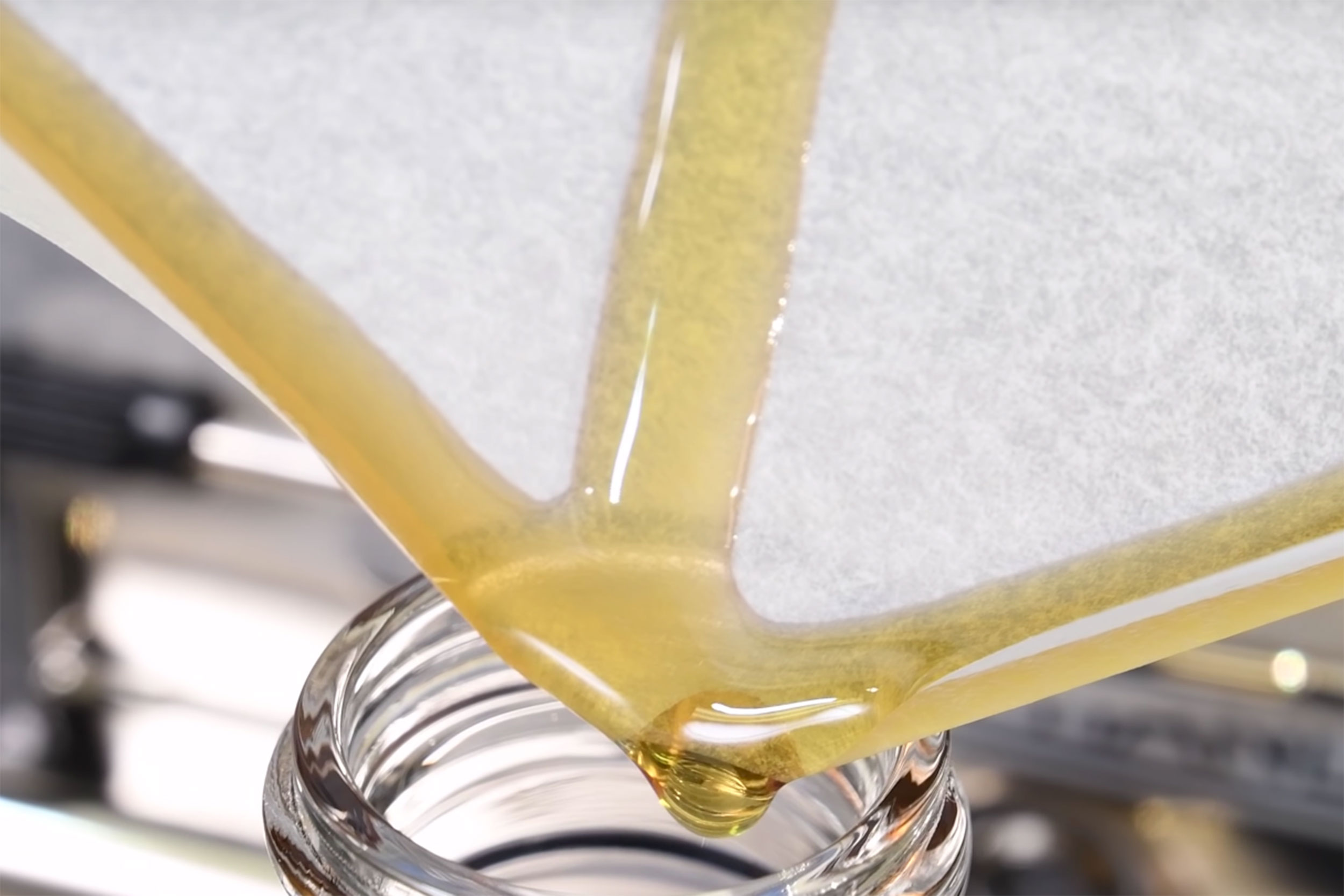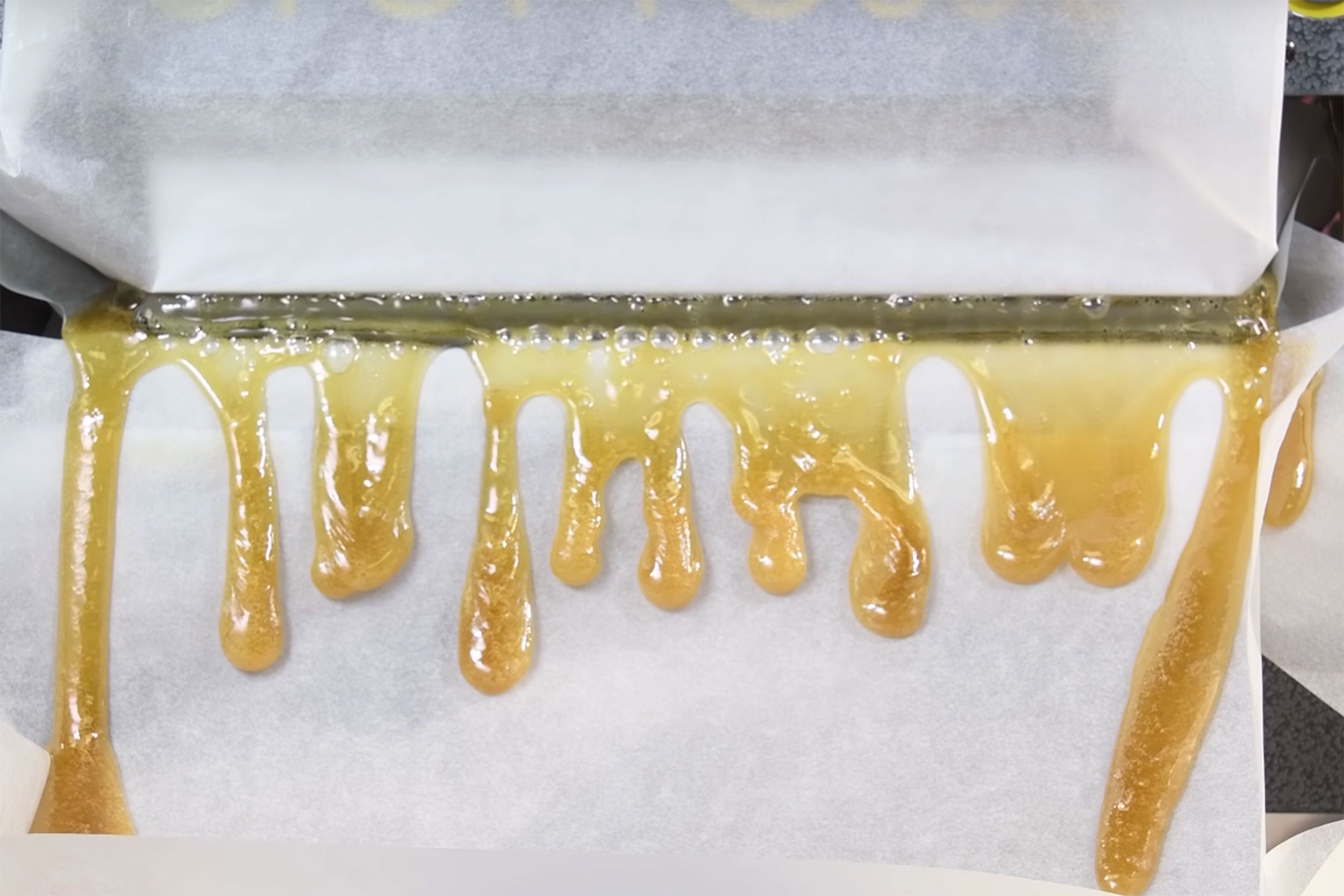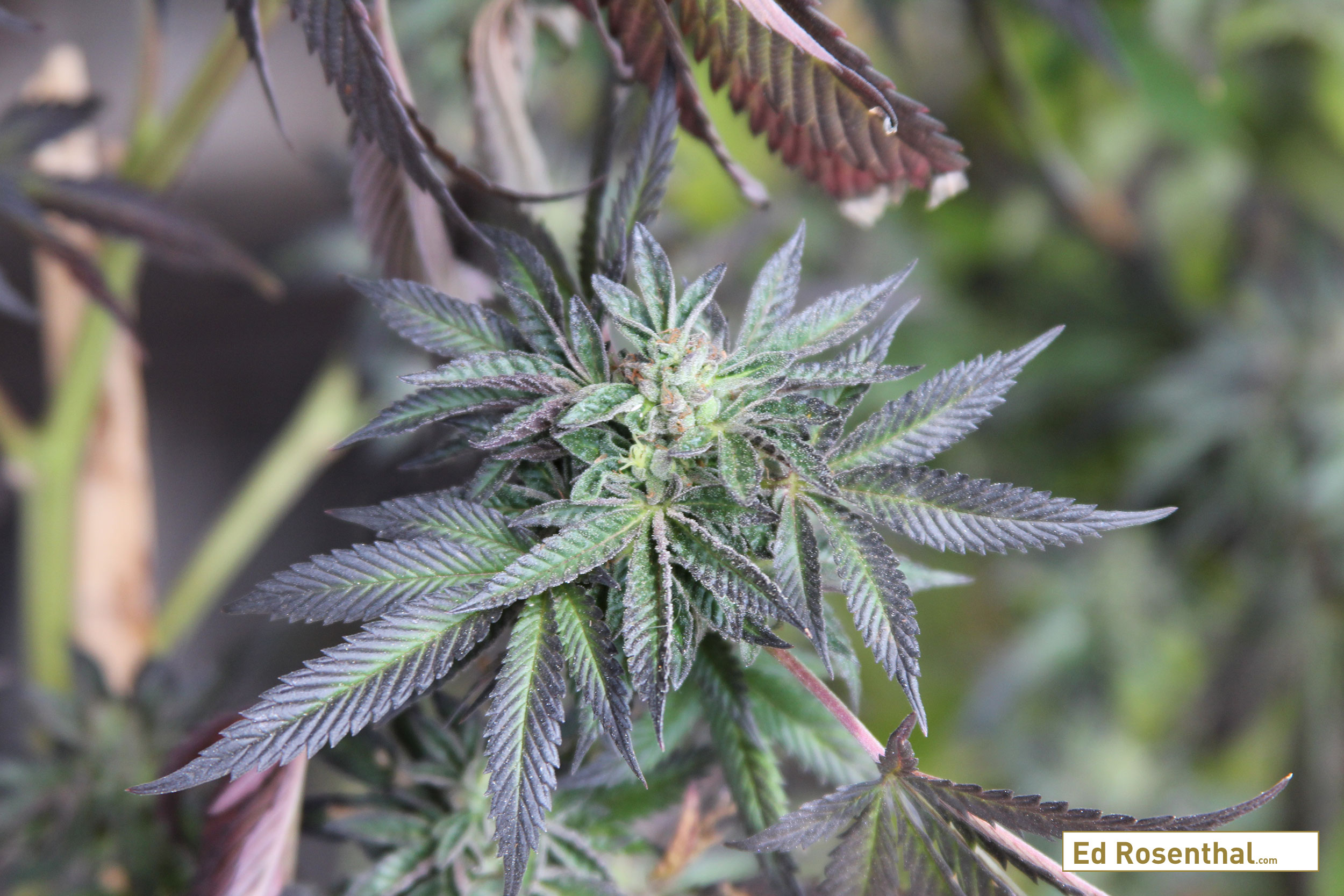Rosin: A Solventless and Inexpensive Way to Make Your Own Cannabis Extract
As a cannabis grower, consultant and educator, I would consider myself a generalist. I do know a lot about the plant, and I also know my limitations.
There are specialists in the cannabis concentrate field, especially given that we finally can legally apply real science to the study of the plant [many a PHd’s will be written about this plant in the very near future].
When I really want to get down to the nitty gritty specifications of individual topics in cannabis concentrates, I consult experts in those areas.
For this article on rosin technology, I reached out to my friends at PurePressure who specialize rosin press technology. Here’s what they had to say.
What is Rosin?
Terpene separation with Longs Peak Rosin Press
Rosin, also known as SHO (solventless hash oil) has blossomed in popularity over the last few years as one of the simplest, least expensive way to extract a concentrated blend of terpenes and cannabinoids from raw buds or hash using a method sometimes called “rosin tech.”
These cannabinoids and terpenes profiles, which create the aromas and flavors of cannabis, are a key target of extraction.
Rosin is a solventless process, meaning it relies on heat and pressure to squeeze cannabinoids and terpenes from the source material, as opposed to the chemical (solvent) process used to produce BHO.
For many consumers, the main benefit of this solventless process is that it does not contain the residual hydrocarbon often found in solvent extracts.
How is Rosin made?
The science behind rosin is simple: Applying heat melts the terpenes and cannabinoids into a pliable resin. Then the resin is squeezed using a press.
This efficient isolation of terpenes from chlorophyll and plant lipids offers a flavorful profile, one that is almost impossible to replicate by smoking or vaping raw buds.
One of the solid advantages of rosin is the speed and ease of extraction: A tasty and potent batch of rosin can be produced in moments and consumed immediately using inexpensive equipment and minimal risk of physical injury.
Note: You must be careful about screening material for mold, residual pesticides, and other contaminants. They stick to the resin and become concentrated in the process. Bottom line: It’s crucial that you ensure clean, high-quality source material, whether you’re pressing rosin from trim, buds, or hash.
There is a bit of a learning curve when using a rosin process at home. This is due to some of the lipids and waxes melting at the same temperatures.
This results in the finished product generally not being as refined as material produced using solvent-based extraction methods.
But with training and experience, the end product can rival solvent extracts.
Today, solventless cannabis products can be found in everything from CBD oil to THC topicals or capsules, edibles, tinctures, vape cartridges and much more.
What is the difference between rosin and BHO?
BHO (Butane Hash Oil) is a hydrocarbon extraction method using the solvent butane to make shatter, wax and sauce extracts.
The initial process of butane extraction is to “run” butane through raw cannabis buds to dissolve the cannabinoids, terpenes, and other active ingredients from the plant matter, then evaporate the solvent.
What’s left behind is highly concentrated resin with trace amounts of solvent. That solvent is then purged, using additional step(s).
The purge process may depend on a number of factors: the physical qualities of the plant matter used; the quality of the resulting resin and the desired end product—shatter, wax, sauce, etc.
A concern for many consumers and medical patients with solvent processing, is the potential for residual hydrocarbons remaining in the product even after is has been purged.
That said, there are some health benefits to hydrocarbon extraction, namely that it strips away or neutralizes biological impurities including bacteria, mold, and other contaminants.
Additionally, the start-up costs of this method are very high compared to a solventless extraction: The cost of the safety equipment needed, and laboratory modifications, exceeds the cost of even an elaborate large-scale rosin operation.
Solventless products are often regarded as the superior product for medical and palliative purposes
Here’s why.
Clean, solventless concentrates eliminate any risk of other compounds or chemicals interfering with a patient’s treatment
Concentrates tend to be associated with the recreational aspect of cannabis consumption.
While it is certainly true that concentrates are consumed for recreational purposes, the perception that they are linked ONLY to the recreational market limits the number of consumers willing to explore solventless extraction equipment, rosin or other solventless concentrates.
Only recently have solventless concentrates begun to receive attention within the medical community.
Unlike other concentration methods, patients have the assurance that a solvent-free product contains only material that came from the plant.
This minimizes risk associated with other compounds or chemicals that may interfere with a patient’s treatment.
The potential of cannabinoids for medical patients
Close up of cannabinoid full trichomes on a cannabis bud. The higher the cannabinoid content of your starting material, the higher yields you can expect. For the best rosin, press the best buds. Freshly cured, resin-rich material results in the best rosin. It is rich in terpenes and high in cannabinoids. Small buds and trim can also be pressed into rosin.
CBD and THC certainly deserve the attention they receive, but there are many other raw, acidic forms of cannabinoids that offer several of the same benefits of the decarboxylated form, but with reduced intoxication.
It’s important to understand the difference between raw and “activated” cannabinoids, because they have different properties and impacts.
Many people don’t realize that the vast majority of what’s contained inside the cannabis plant’s resin glands is THCa, the chemical precursor of THC. The same is true for CBD: High CBD strains are actually high in CBDa.
In both instances, the “a” stands for acid — carboxylic acid specifically, which does not easily pass through the blood-brain barrier because of its atomic structure, which is altered passively through the process of decarboxylation; the name refers to the removal of the COOH “carboxyl group.”
Although people generally refer to the total measured potency of a flower or concentrate (including acidic precursors) as “cannabinoid content,” it’s the raw cannabinoid acids that are dominant in bud.
Smoking, vaporizing, or in some cases extracting the bud decarboxylates THCA to delta-9-THC, the psychoactive compound, or in the case of cannabidiol (CBD), from CBDa to CBD.
Rosin processing, though not a cold process, occurs below the volatilization point for most of the terpenes, and doesn’t reach the temperatures needed for decarboxylation, preserving the raw, acidic cannabinoids so the rosin is mostly a concentration of THCA and/or CBDA, the acidic precursors to the cannabinoids.
The result: if consumed at this point, the material is not intoxicating and will preserve the acidic cannabinoids.
Many patients find great relief in combining both acid cannabinoids and activated cannabinoids.
This is why rosin presses are growing in popularity due to their tasty profiles, and their ability to create THCA separations and other cannabinoid-specific products.
Rosin extractions have broader abilities beyond cannabinoids
Raw solventless terpenes. Photo by PurePressure.
Terpene extractors also use solventless methods to isolate specific parts of the plant’s profile, resulting in some of the most sought-after products in the cannabis market.
Cannabis extraction equipment now allows producers to produce solventless products for patients in an array of consumption methods.
While they could, in theory, do a dab, a patient is more likely to choose a less intense consumption method like vape cartridges or edibles made from rosin expanded solventless extraction.
Today, solventless extraction equipment includes enhanced rosin tech and extends to pills and tinctures as well.
Depending on the need, patients can reach for a solventless treatment option just as a recreational user might do a dab to get high.
Cutting edge rosin tech solutions are available to individuals and commercial producers
Terpene separation with Longs Peak Rosin Press
The extraction market frequently upgrades and innovates its technology, from minor proprietary tweaks to potential industry-defining evolutions.
The rise of solventless extraction technology has led to some of the most exciting developments in the entire cannabis industry, including the rapid growth in tastes for solventless hash rosin, full melt, and cartridges.
Many companies offer cutting edge rosin tech solutions so that literally anyone can have a truly elite, manual controlled rosin tech system capable of producing a commercial-grade concentrate for personal or business use.
Producers at home and in commercial extraction labs can now experience the unparalleled utility of a rosin press, and with it, the absence of any volatile chemicals in the extraction process.
Aside from being able to produce some of the world’s most premium concentrates just about anywhere, modern sophisticated safety measures built into this equipment ensure that accidents are virtually impossible.
These safety measures can also extend to protecting raw materials and maximizing yields, thanks to pre-programmed settings that ensure the flower isn’t overly heated or pressed.
As the cannabis market opens up and more products become available, many health-conscious consumers recognize: if a product can be made using solvents, there is often a premium, solventless option available.
Join our cannabis community
Follow Us












